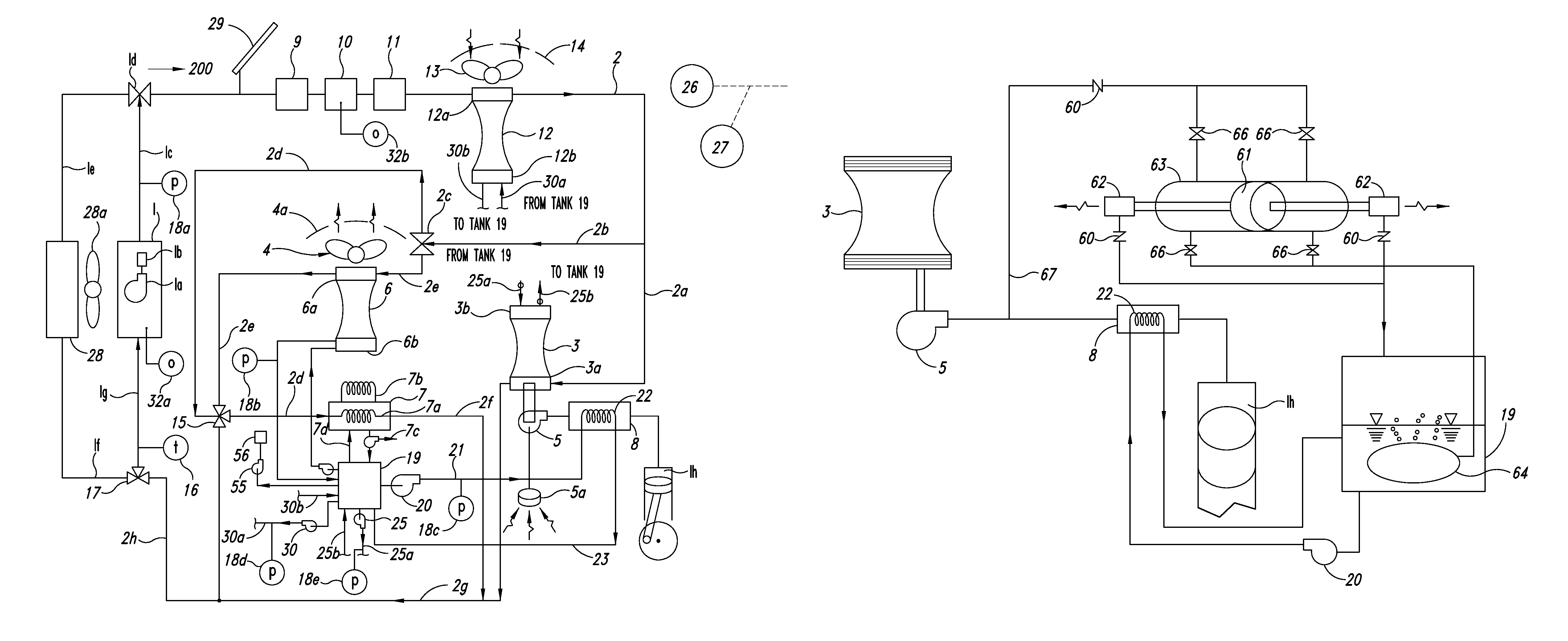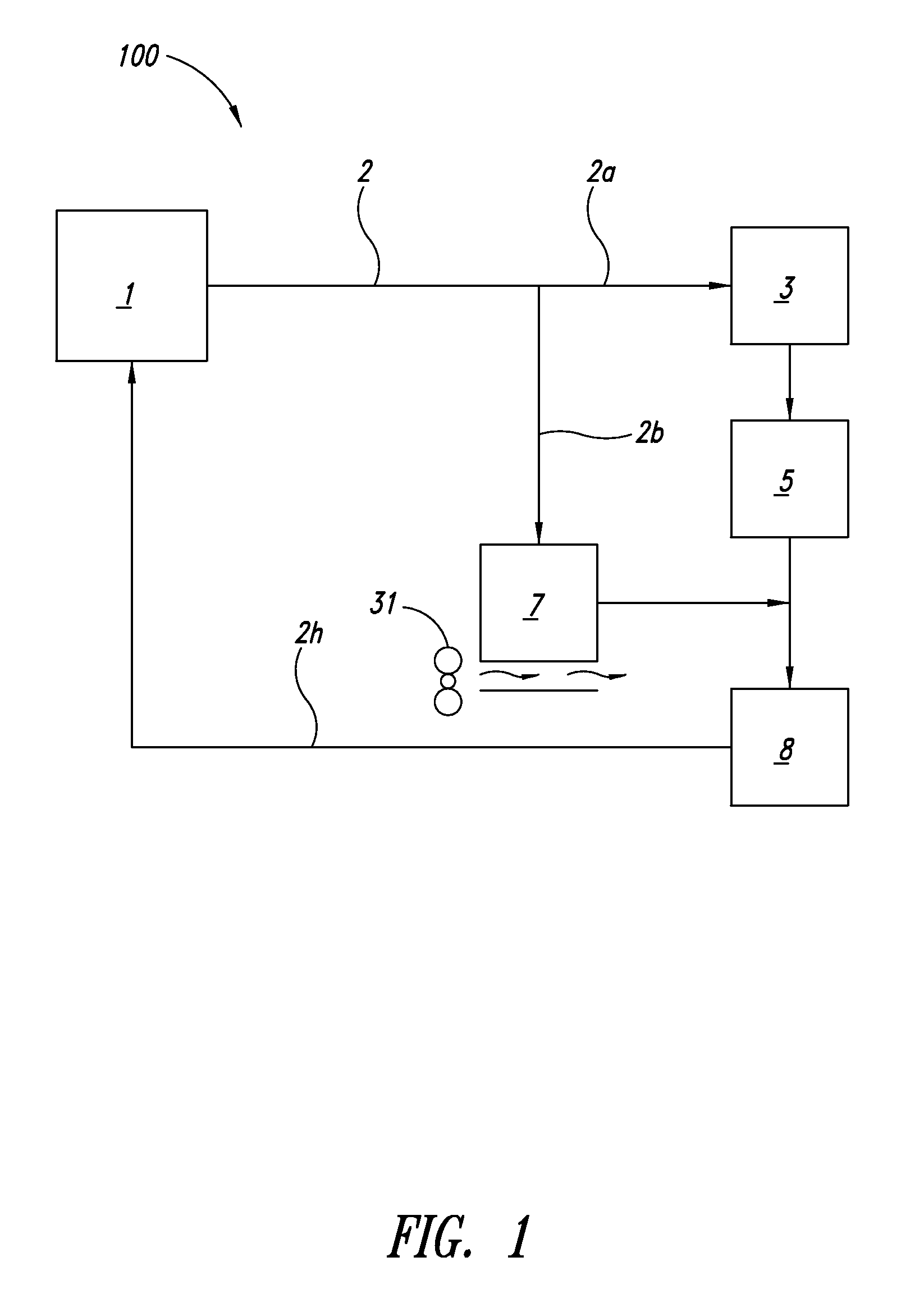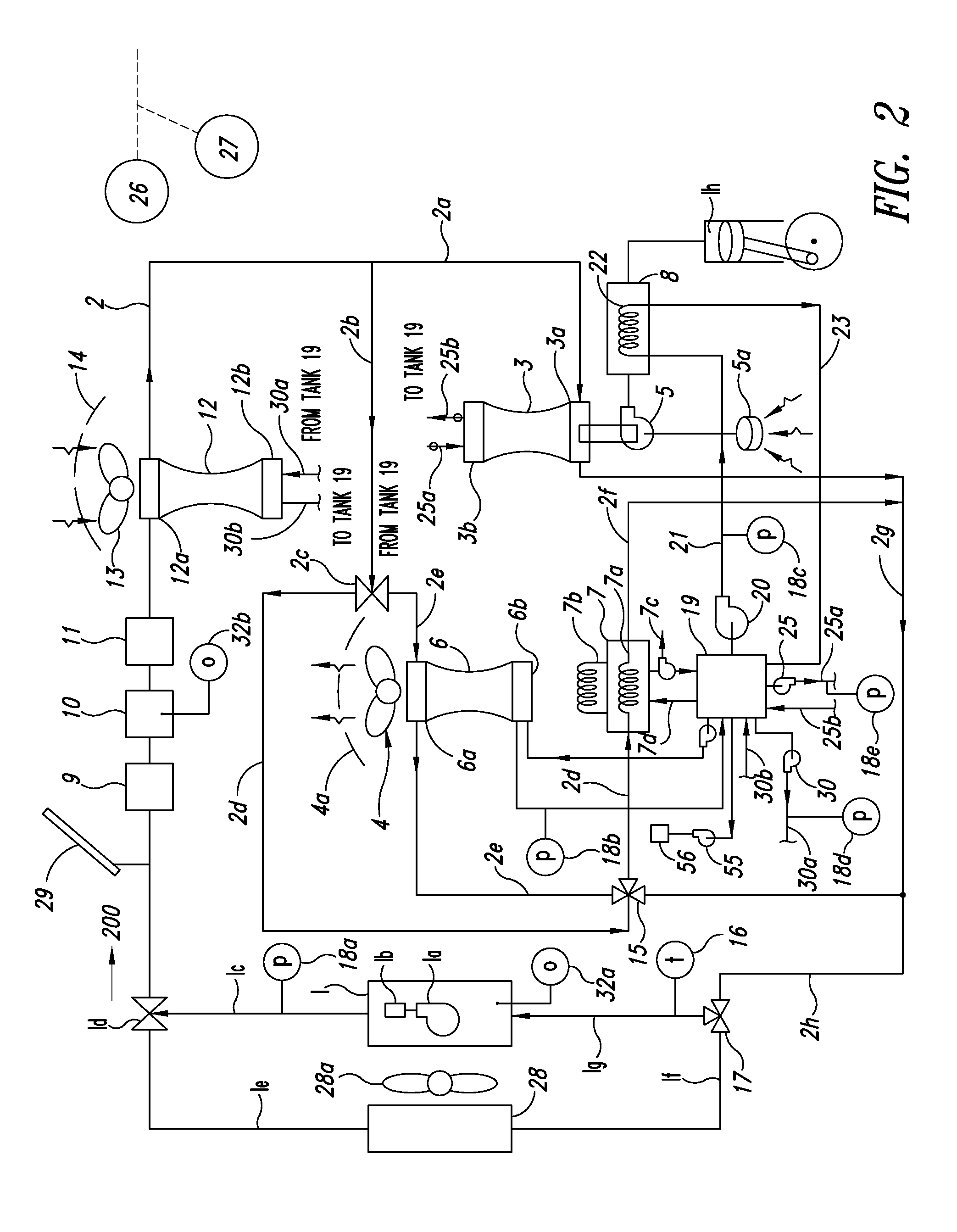System and method of waste heat recovery and utilization
a waste heat recovery and waste heat technology, applied in the field of internal combustion engine improvement, can solve the problems of lubricant, prolonging the combustion duration in the power stroke, prolonging the life of the engine components, etc., to facilitate the recovery of waste heat, improve the other operating conditions of the engine, and improve the fuel consumption efficiency of the engine
- Summary
- Abstract
- Description
- Claims
- Application Information
AI Technical Summary
Benefits of technology
Problems solved by technology
Method used
Image
Examples
Embodiment Construction
FIG. 1 illustrates a waste heat recovery and utilization system 100 according to one embodiment. The system 100 includes an internal combustion engine 1, a non-combustion engine 3, a compressor 5, and a cooling system or apparatus 7. In one aspect, the non-combustion engine 3 can include a Stirling engine, and the cooling system 7 can include a chiller. For clarity of description and convenience, reference to non-combustion engines will hereinafter be made by “Stirling engine,” without any intention to limit the present disclosure or to exclude other suitable non-combustion engines. Similarly, reference to cooling systems or apparatuses will hereinafter be made by “chiller,” without any intention to limit the present disclosure or to exclude other suitable cooling devices.
In one aspect, the system 100 further includes a waste heat loop 2 configured to recover heat from the engine 1 and route it to the Stirling engine 3.
The waste heat loop 2 includes a heat transfer fluid, such as wa...
PUM
 Login to View More
Login to View More Abstract
Description
Claims
Application Information
 Login to View More
Login to View More - R&D
- Intellectual Property
- Life Sciences
- Materials
- Tech Scout
- Unparalleled Data Quality
- Higher Quality Content
- 60% Fewer Hallucinations
Browse by: Latest US Patents, China's latest patents, Technical Efficacy Thesaurus, Application Domain, Technology Topic, Popular Technical Reports.
© 2025 PatSnap. All rights reserved.Legal|Privacy policy|Modern Slavery Act Transparency Statement|Sitemap|About US| Contact US: help@patsnap.com



